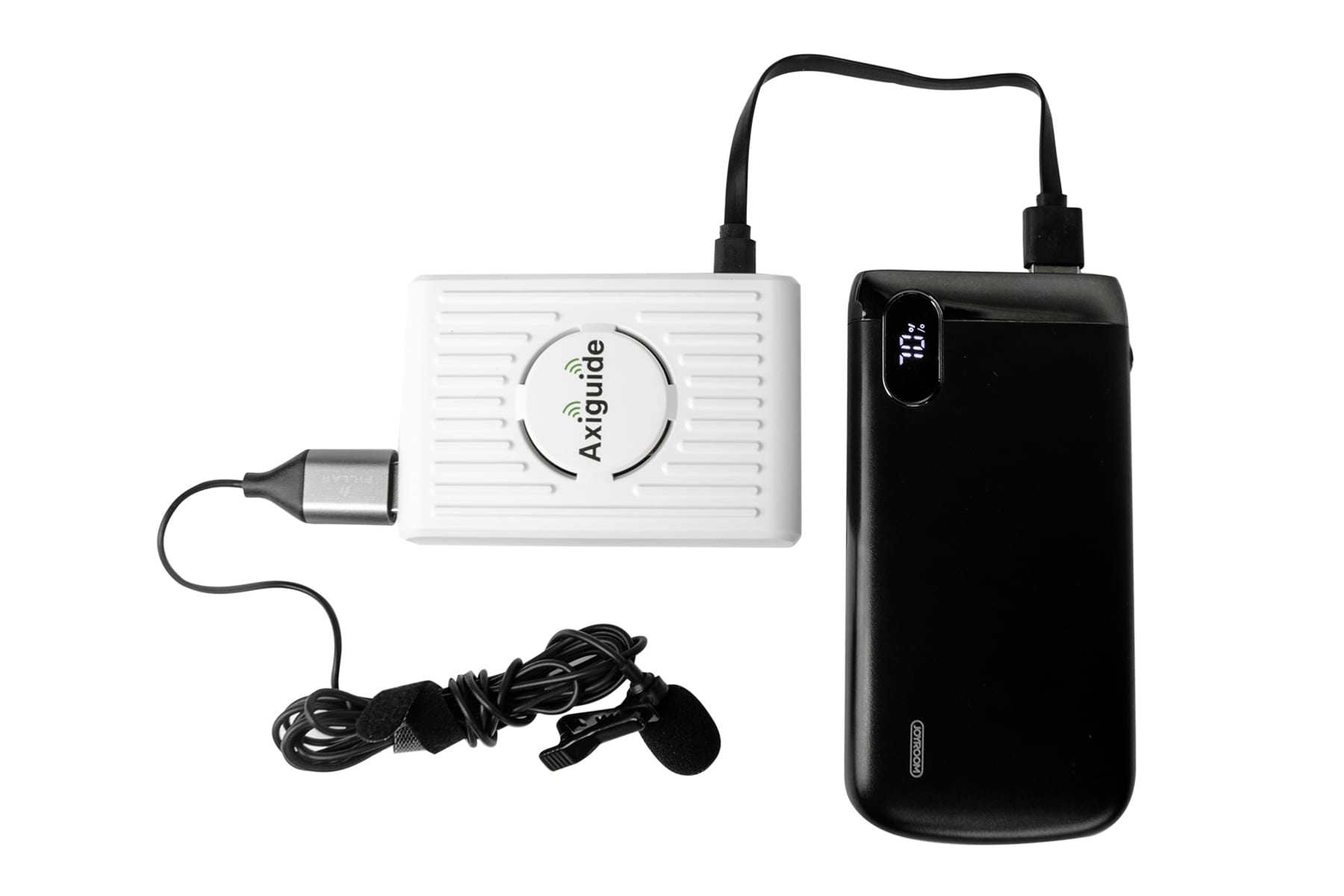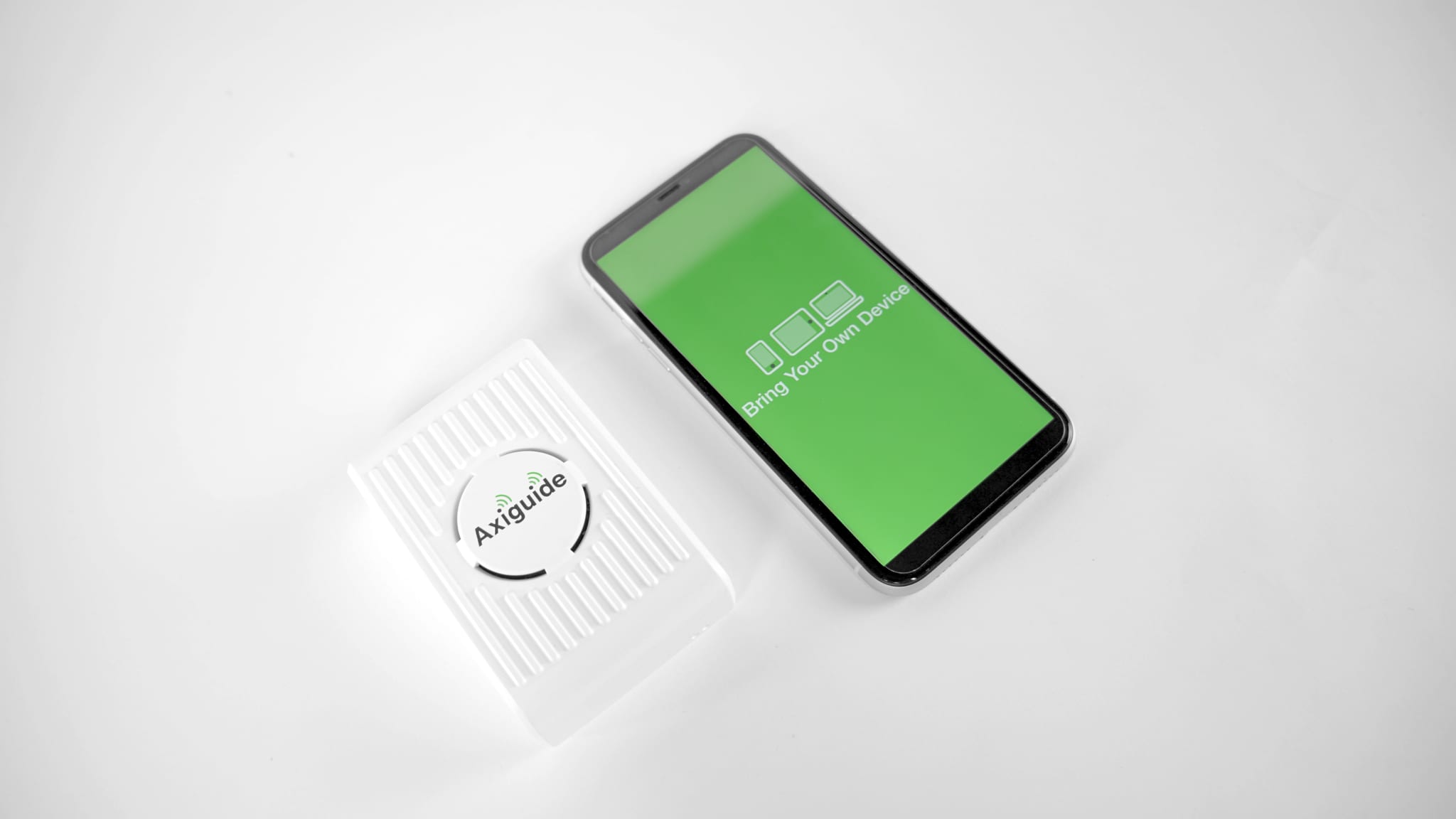Wireless communication during excursions
Teaching groups of students at external locations - special buildings or landscapes, museums, during outdoor activities - how do you do that? And how do you do that if your students also have to remain at a safe distance from each other? Various lecturers within the Faculty of Arts came up with a similar solution more or less at the same time: a wireless tourguide system as is used for guided tours. One of them is Theo Spek, professor of Landscape History at the UG. Below are his experiences, supplemented with those of Barend van Heusden (Arts, Culture and Media), Louise Vanhee and Linda Nijenhof (Art History). These are the first experiments, which unfortunately had to be stopped for the time being due to stricter covid measures.
Excursions with the wireless tourguide system Axiguide Simplex 30
by Theo Spek, Professor of Landscape History

Motive and underlying reasons
In our Bachelor's and Master's programmes in the field of landscape history, fieldwork and excursions are an important part of our programme, both in the Netherlands and abroad. Many of these outdoor activities consist of walks, bicycle rides, or personal fieldwork assignments of 15-30 students and 1-2 lecturers. At many places along the way, the lecturer explains the structure and history of the landscape, after which a discussion usually unfolds within the group. The problem with bicycle excursions in particular is that it always takes a long time before a long line of bicycles has gathered around the lecturer during a stop. During walks, it is often difficult for students who are further away from the lecturer to understand what is being said. Additionally, as a consequence of covid, we struggled with the question of how to keep a group of several dozen people at a sufficient distance from each other during a field trip.
Spurred on by the covid constraints in our education, in the summer of 2020 we searched for a suitable tourguide system that could counteract the above-mentioned disadvantages. An internet search led to the selection of the Axiguide Simplex 30 system (price approx. €1300). This allows a group of up to 30 people to follow a guide with transmitter and microphone up to a distance of about 80 metres via their own mobile phone with earphones.
How does the system work?
The set turns out to be very small and compact and fits into a small 20x10x5 cm carry bag, but also into a spacious jacket pocket or the side pocket of a backpack. The system consists of a router, an external battery, an antenna of about 15 cm and a microphone. The router sends out a Wi-Fi signal that has a range of up to 80 metres. Visitors have to log onto this Wi-Fi network and then call up a corresponding web page with a special, simple URL: 123axi.com. On this webpage, they can listen to the guide, who speaks to the group through the microphone. The Axiguide Simplex actually consists of two Wi-Fi networks: the guide and 14 participants can log in on the first one, and another 15 people can log in on the second. If a participant moves more than 80 metres away from the guide during the excursion, the connection to the WiFi network is lost and the login procedure has to be repeated when the participant returns.
Experiences in practice
Last September, I tested the Axiguide system twice during field trips in the Drentsche Aa area and South Limburg with a group of about 30 students. Beforehand, I had printed the log-in instructions on an A4 sheet for all participants. At home, the night before the excursion, I charged the external battery, similar to charging a mobile phone. The charging took several hours, so it cannot be done quickly right before the excursion.
At the beginning of the excursion, I connected the small router to the external battery, the antenna and the microphone. I attached the microphone to the lapel of my coat using the attached clip, and kept the rest in my coat pocket. In a quiet place, I then asked the students to log in to one of the two Wi-Fi networks. Both were visible on their mobile phones. The first (14 people) fills up quite quickly, so the rest has to log onto the second network. Around 80% of the participants succeeded in logging in, the rest unfortunately did not. We have not yet discovered the reason for this. However, a strikingly large number of the people who could not log in were using Huawei phones, so perhaps that brand is not very compatible with Axiguide (point for further investigation). After logging in, the students turned out to be able to hear me very clearly (good sound quality), both when they were walking tens of metres away and when they were cycling. As such, the system functioned well. However, barriers such as rows of thick trees and especially blocks of houses (turning a corner) clearly cause problems: the participants often lose contact and have to log in again. This is obviously irritating when you are in the middle of an excursion. Another small sticking point for me as a guide is that you cannot really have small talk with someone around you between excursion points without all the participants being able to hear. An on-off button on the microphone would be welcome, because not everyone is waiting for this kind of useless chatter.
Our experience so far has been generally positive: a simple, handy system that works well. However, as we had only tried the system twice when the university banned excursions like this altogether because of covid, the system needs to be tested further at a later stage.
Theo Spek, February 2021
Other experiences of literature teachers
Axiguide Simplex, the system used by Theo Spek, was purchased by the Landscape History programme itself. Students can receive the spoken text on their smartphones. A major advantage of this system is that the teacher does not need to take along separate receivers and hand them out. However, students cannot ask oral questions via the system (though chatting is possible). Louise Vanhee tried out an identical set, owned by Art History, during a visit to the Wall House. She and a student assistant stayed outside, while the first-year students walked around in the Wall House. The first experiences were not positive, the distance and the walls were probably the cause of a weak connection. However, her colleague Linda Nijenhof, who used the same system, was much more positive. Because of the stricter covid measures, further experiments have not yet got off the ground.
Barend van Heusden (Arts, Culture and Media) used Axitour, a system that can be borrowed from AV Services. This is a set with separate receivers for the students, who can also speak themselves. In the Arts and Culture master's programme, works of art in public spaces are visited and discussed. This went well with a group of 8 students and Axitour. However, a hybrid form of education in which some of the students can also follow the excursion online is not possible, so that the experiment could not be continued.
In brief
Possible use cases. Excursions, both outdoors and inside buildings. Walks and bicycle tours with explanations by a teacher.
Advantages
- Students can remain at a distance from each other and the teacher, while the speaker can still be heard clearly. This is not only useful when it comes to covid measures, but also, for example, during bicycle tours.
- With the Simplex system, students can receive the lecturer on their own smartphone.
Disadvantages
- The Axiguide Simplex system is one-way, students cannot speak for themselves. A duplex variant that does allow this is limited to 7 participants.
- Distance and obstacles like walls can be an obstacle to a good reception.
- The system may not be compatible with all mobile phones.
- The Axiguide transmitter does not have a mute button (the Axitour does).
Costs. The Axiguide Simplex system was purchased by the Landscape History and Art History programmes themselves (costs approx. € 1300). An Axitour set consisting of one transmitter and 30 receivers in a charging case can be borrowed via AV Services. Matching disposable earphones can also be obtained there.
Learning curve. It is a good idea to try out the set before using it the first time. Exploring the possibilities will take no more than half an hour. It is advisable, especially with the Axiguide system where students have to log in to a website via a smartphone, to send an instruction in advance.
Additional information
Websites of the supplier:
- Axitour
- Axiguide
| Last modified: | 08 January 2024 1.43 p.m. |


